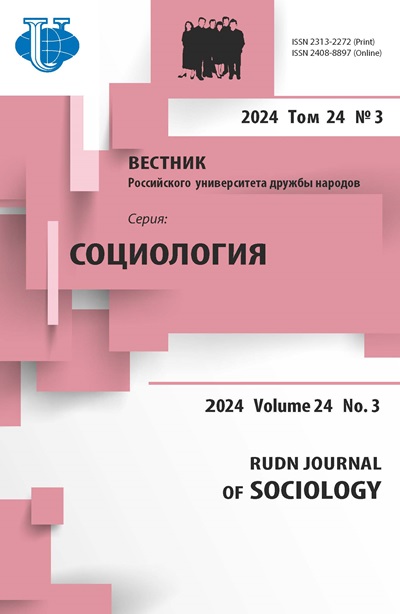Новый «жизненный мир» в визуальной культуре
- Авторы: Вольчина А.Е.1
-
Учреждения:
- Российский университет дружбы народов
- Выпуск: Том 15, № 3 (2015)
- Страницы: 34-44
- Раздел: Статьи
- URL: https://journals.rudn.ru/sociology/article/view/6276
Цитировать
Полный текст
Аннотация
Статья посвящена анализу методологии визуальных исследований с применением феноменологической концепции «жизненного мира». Рассмотрены социокультурные основы формирования визуальной культуры в эпоху постмодерна, теоретические аспекты «визуального поворота», проявление природы симулякров через визуальность и дизайнерское оформление предметов-образов. Актуальность исследования обусловлена увеличением объема визуального контента и охвата населения планеты визуальными средствами массовой информации. В настоящее время визуальные исследования распространяются в основном на изучение такого контента, как фотография, рекламные биллборды, кинематограф. Новым полем для освоения визуальных методов является Интернет: разнообразие дизайна и интерфейсов наводит на мысль о формировании собственной виртуальной интернет-культуры, косвенно зависящей от социально-культурных особенностей создателей проекта или большинства пользователей. В данном контексте с использованием визуальных методов был проведен сравнительный анализ двух поисковых систем: Google и Yandex. Гипотеза исследования состояла в том, что выбор российскими пользователями поисковой системы Yandex вместо международного Google обусловлен рядом графических и навигационных особенностей поисковика, в большей степени подходящих именно российскому пользователю. Результат проведенного анализа скорее подтвердил, чем опроверг выдвинутую гипотезу, указав на ряд элементов дизайна и интерфейса, соотносящихся с культурными предпочтениями жителей постсоветского пространства.
Об авторах
Анна Евгеньевна Вольчина
Российский университет дружбы народов
Автор, ответственный за переписку.
Email: a.e.volchina@gmail.com
Кафедра социологии
Список литературы
- Барт Р. Camera lucida. Пер., коммент. и послесловие М.К. Рыклина. М.: Ad Marginem, 1997.
- Бодрийяр Ж. Симулякры и симуляция / Пер. А. Качалова. М.: Рипол-классик, 2015.
- Бронзино Л.Ю., Свиридов Р.А. Метаморфоза одной метафоры, или от dasein к дизайну // Журнал социологии и социальной антропологии. 2014. Т. XVII. № 4. С. 30-40.
- В РФ за год число пользователей интернета выросло на 2,5 млн человек. URL: http://minsvyaz.ru/ru/events/32442.
- История эволюция и создания Интернета. URL: http://www.youtube.com/watch?v= wbrmmiWjNnE.
- Курмелева Е.М., Мещерякова Л.Ю. Симулякр и общество в современной социальной теории // Вестник Российского университета дружбы народов. Серия «Социология». 2006. № 2. С. 31-46.
- Лингвистический поворот // История философии: Энциклопедия. Мн.: Интерпрессервис; Книжный Дом, 2002.
- Рейтинг основных поисковых систем. URL: http://www.y1.ru/index.php?id=1.
- Рождественская Е.Ю. Визуальный поворот: анализ и интерпретация изображений // Визуальная антропология: новые взгляды на социальную реальность / Под ред. Е.Р. Ярской-Смирновой, П.В. Романова, В.Л. Круткина. Саратов: Научная книга, 2007.
- Свасьян К.А. Феноменологическое познание. Пропедевтика и критика. Ереван: Издательство АН Армянской ССР, 1987.
- Толковый словарь терминов. URL: http://your-hosting.ru/terms/i/internet.
- Тоффлер Э. Третья волна. М.: АСТ, 2010.
- Щербакова Е.И. Визуальная история: освоение нового пространства. Исторические исследования в России - III. Пятнадцать лет спустя / Под ред. Г.А. Бордюгова. М: АИРО XXI, 2011.
- Internet Monitoring & User Control. URL: http://www.internetlivestats.com.
- Website Ranking. URL: http://www.similarweb.com/global.
- John G. The Scope of Visual Sociology // Visual Sociology. 1996. Vol. 11. № 2. Р. 10-24.
- The Top 20 Valuable Facebook Statistics. URL: https://zephoria.com/social-media/top-15-valuable-facebook-statistics.














